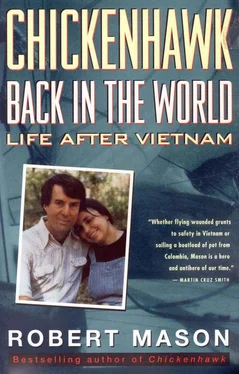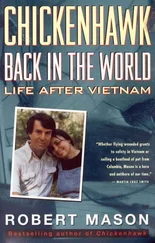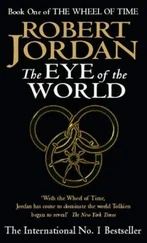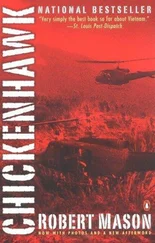Robert Mason - Chickenhawk - Back in the World - Life After Vietnam
Здесь есть возможность читать онлайн «Robert Mason - Chickenhawk - Back in the World - Life After Vietnam» весь текст электронной книги совершенно бесплатно (целиком полную версию без сокращений). В некоторых случаях можно слушать аудио, скачать через торрент в формате fb2 и присутствует краткое содержание. Год выпуска: 2013, Издательство: BookBaby, Жанр: Старинная литература, на английском языке. Описание произведения, (предисловие) а так же отзывы посетителей доступны на портале библиотеки ЛибКат.
- Название:Chickenhawk: Back in the World - Life After Vietnam
- Автор:
- Издательство:BookBaby
- Жанр:
- Год:2013
- ISBN:нет данных
- Рейтинг книги:3 / 5. Голосов: 1
-
Избранное:Добавить в избранное
- Отзывы:
-
Ваша оценка:
- 60
- 1
- 2
- 3
- 4
- 5
Chickenhawk: Back in the World - Life After Vietnam: краткое содержание, описание и аннотация
Предлагаем к чтению аннотацию, описание, краткое содержание или предисловие (зависит от того, что написал сам автор книги «Chickenhawk: Back in the World - Life After Vietnam»). Если вы не нашли необходимую информацию о книге — напишите в комментариях, мы постараемся отыскать её.
Chickenhawk: Back in the World - Life After Vietnam — читать онлайн бесплатно полную книгу (весь текст) целиком
Ниже представлен текст книги, разбитый по страницам. Система сохранения места последней прочитанной страницы, позволяет с удобством читать онлайн бесплатно книгу «Chickenhawk: Back in the World - Life After Vietnam», без необходимости каждый раз заново искать на чём Вы остановились. Поставьте закладку, и сможете в любой момент перейти на страницу, на которой закончили чтение.
Интервал:
Закладка:
John and I went below and looked at the engine again. Still very large and gray with lots of things sticking out of it. John pumped the fuel pump again. Ireland cranked. Groan. Chugga. Chugga. Pow. It started, but you could hear the starter grinding; the battery was getting weak.
The engine ran for half an hour. Got it going again. Ran fifteen minutes more. The next time we tried starting it, we got: Chugga. Chugga. Nothing. The battery was so weak from the repeated starting that the engine was barely turning over. We had to fix the engine.
We sat in the cockpit pooling our knowledge of diesel engines. When we were done, you could’ve put what we knew about these things on a piece of paper with plenty of room left over to write an insurance contract. John had the only real experience among us. He said air must be getting into the fuel pump, causing it to lose its prime. How? “Maybe it gets in at the seal where it’s mounted to the engine. Maybe it gets in at some little pinhole in the fuel line. I dunno.”
We had a lunch of peanut butter sandwiches and beer. I even drank one. The weather was getting hot—ninety degrees. We were four hundred miles from Saint Thomas, out of the cold latitudes. We took to wearing nothing.
After lunch, John and I crawled back in to the engine and, with much grunting, twisting, wrenching, and knuckle bruising in the tight space, we managed to get the fuel pump off. We brought it up on deck and stared at it. Looked like a fuel pump. Had a diaphragm thingy, here, must be pushed up and down by that cam whatsit, there. Yep. You push the priming lever and it pumps fuel into the pump. John pushed the lever and we saw a few drops of diesel fuel squirt out. Promising, eh? We did the only thing we knew how: we took out all the parts we could get loose, wiped them clean, and put them back in. It was now very clean, like it was before we took it apart. John and I went down and bolted it back on and primed it. Ireland pushed the starter. Groan. Grind. Rumble. Growl.
Yea!
The Namaste surged ahead, once again under way. We drank some more beer and told jokes for an hour. Then the engine quit. The breeze died as the Namaste stopped. The sun beat down. The sea was listless, stagnant.
John got up. “This is bullshit!” He grabbed a coil of rope, tied one end to the stem pulpit rail, and flung the coil over the stem. The Namaste was moving enough that the rope trailed behind. Then John jumped overboard. We watched him splashing around in the water, yelling, laughing. “What we need is a fucking break! C’mon. Cool off!”
Ireland and I jumped in. It was like three naked boys at the old swimming hole, except the water in this swimming hole was almost a mile deep.
When the Namaste drifted too far ahead, we’d swim to the line and pull ourselves up to the boat. I got back on board and fetched a diving mask and my camera and went back in. It was exhilarating. When I put the mask on and looked underwater, it felt like I was suspended in space. The crystal-clear water got darker, turning deep blue hundreds of feet down. Somewhere down there was the bottom. I bet this is like being in orbit, in freefall, I thought. Flickering shafts of sunlight pierced the water and converged at infinity. I dove down and within seconds lost track of which way was up. I had a strange urge to keep swimming down, down to where the shifting light beams met. When I stopped swimming, I floated slowly back up. That’s where up is in sea-space. Not from where you fall, but to where you float.
The next day, the Namaste sat motionless in a vast wasteland. The water was thick with seaweed and trash. The place is called the Sargasso Sea—which we immediately changed to the Elephant Sea—where several currents converge and swirl together, keeping the seaweed in huge mats. It’s a unique kind of seaweed called sargassum which is native to sea currents. Branches of the plant are called fronds, inhabited by unique animals like the sargassum frog fish and sea slugs. The seaweed was alive with little fish that looked like they were made of seaweed, little silvery darting ones, and baby jellyfish. They say baby sea turtles live here until they get big enough to survive open water. The trash—six-pack rings, Styrofoam cups, bread bags, light bulbs, bottles, tin cans—was obscene. We were hundreds of miles from any land, and here was a trash dump that covered many square miles. “It’s like the world is a bunch of rednecks,” Ireland said.
We waited for wind. I sat below reading the Air Almanac. In the back of the book there’s a section that describes the process of plotting your position from your sighting—in case you’re on a bombing raid and can’t remember how to do it and the captain’s yelling, “Where the fuck are we?” I read that and worked the sample problems.
I went above with the sextant and made sun shots and plotted our position every hour. We were moving at less than one mile an hour. We had the radio on, listening to an evangelical show from Puerto Rico, the only station we could get clearly. I wanted to hear them pitch the autographed picture of Jesus Christ with eyes that glow in the dark, but they were just asking for money. Ireland was drawing a picture of the Namaste. John was reading a Captain Homblower book (who, along with Errol Flynn, was one of his heroes). At lunchtime I made some beans and rice.
After lunch I went below and pulled the ladder away from the engine hatch and crawled in. I studied this fuel pump thing. You could see the copper tubing that fed it coming from two places on the fuel tank above. There were five junctions in the tubing where air could be leaking in. Or the seal at the pump itself could have an invisible pinhole. Start with the obvious. I took the pump off and took it on deck. John and Ireland glanced over as I wiped the seal with a rag. The rubber gasket was immaculate, but I smeared it with a layer of silicon rubber, for insurance, and went below and bolted the pump back in place with the silicon wet. A couple hours later, I suggested we try it again.
The batteries were very low from trying to start the engine for the last two days, but the engine caught. We had been through this enough to know not to get crazy about the fact that the fucking engine ran, so we just sat where we were and waited. She died in less than five minutes. I nodded. John got back into his book. Ireland drew.
I went back into the engine compartment and stared at the fuel pump. It was stifling in the small place because of the heat of the day, and now the engine was hot from its little workout.
So, if you prime the pump full, it works—the engine runs until the fuel in the pump is gone. I knew the seal was tight; they use silicon to seal fish tanks. Obviously, the lines feeding the pump must have a leak. I looked at the tubing. Air could get in at a connection, or in through a pinhole in the tubing itself. It could be anywhere. There wasn’t a hint of fuel leaking out, so it was so small that only air leaked in. I took the fuel pump off again and studied the primer pump mechanism. The lever pushed a piston which squeezed out fuel. I pressed it until all the fuel squirted out. Then it just hissed as it pumped air. It pumps air. Idea jumped into my brain. What if I put the pump back on backwards? Then when I primed the pump, I’d be pumping air, under pressure, into the fuel line. Brilliant.
I went below and reversed the connections. I let the pump hang loose beside the engine. I attached the pump’s outlet to the fuel line.
I went into the cabin and got some Joy detergent, put some in a coffee cup, and mixed it with water. I got a rag and crawled back under the cockpit, next to the engine. I swabbed the soap mixture on each joint, one at a time, and pumped the fuel pump. If the problem really was an air leak, then I should see bubbles at the hole. At the last junction, a T-connector mounted on the engine compartment bulkhead, I saw foam.
Читать дальшеИнтервал:
Закладка:
Похожие книги на «Chickenhawk: Back in the World - Life After Vietnam»
Представляем Вашему вниманию похожие книги на «Chickenhawk: Back in the World - Life After Vietnam» списком для выбора. Мы отобрали схожую по названию и смыслу литературу в надежде предоставить читателям больше вариантов отыскать новые, интересные, ещё непрочитанные произведения.
Обсуждение, отзывы о книге «Chickenhawk: Back in the World - Life After Vietnam» и просто собственные мнения читателей. Оставьте ваши комментарии, напишите, что Вы думаете о произведении, его смысле или главных героях. Укажите что конкретно понравилось, а что нет, и почему Вы так считаете.












